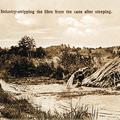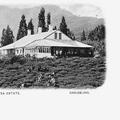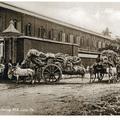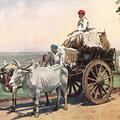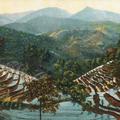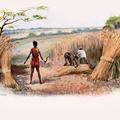The Jute Industry-stripping the fibre from the cane after steeping.
"Another sign of the transition from the wet to the dry season was to be seen in the immense number of jute-stem stacks standing on every field and lawn," wrote Nirad Chaudhry in his Autobiography of an Unknown Indian. "After the bark which yields

